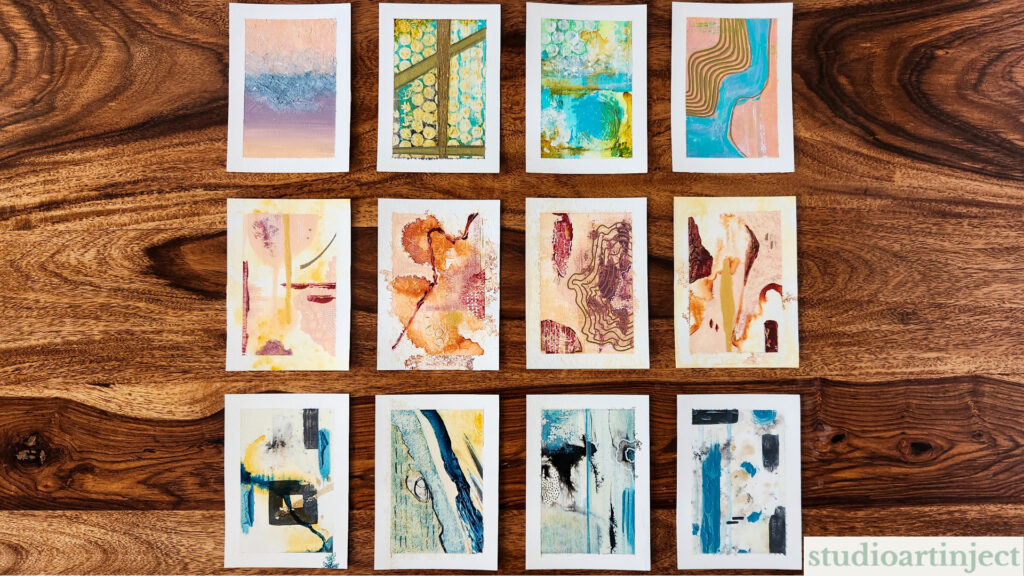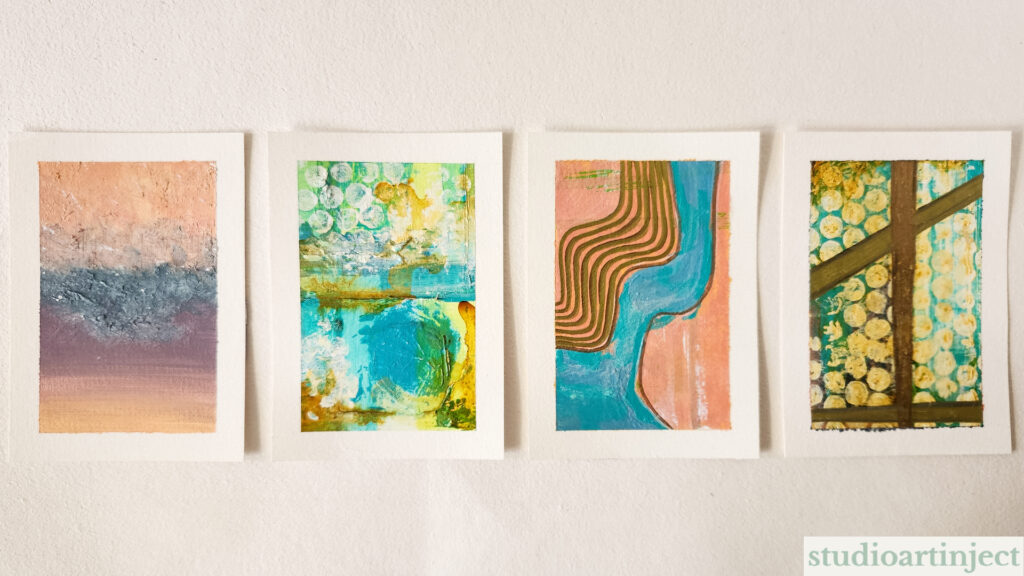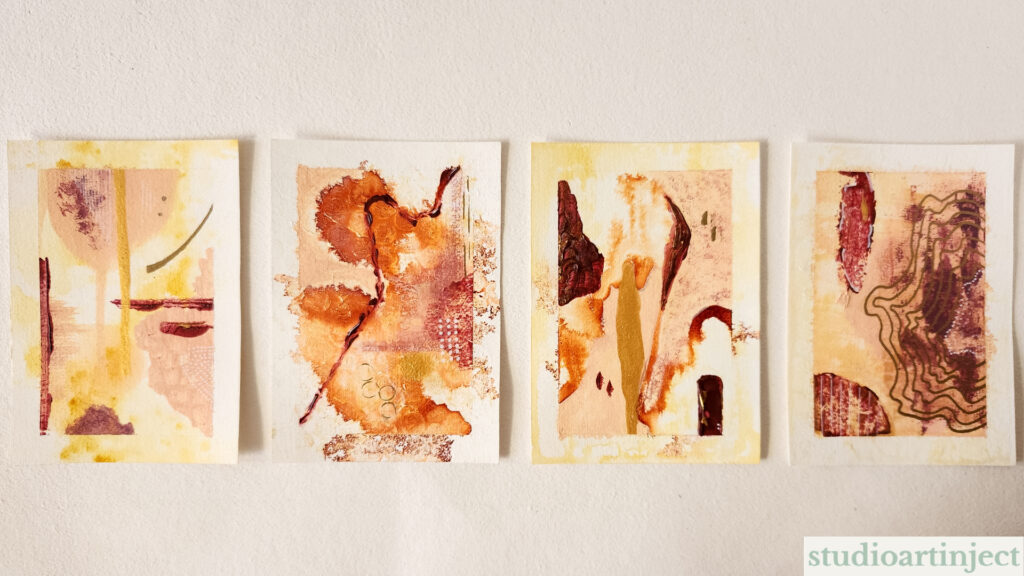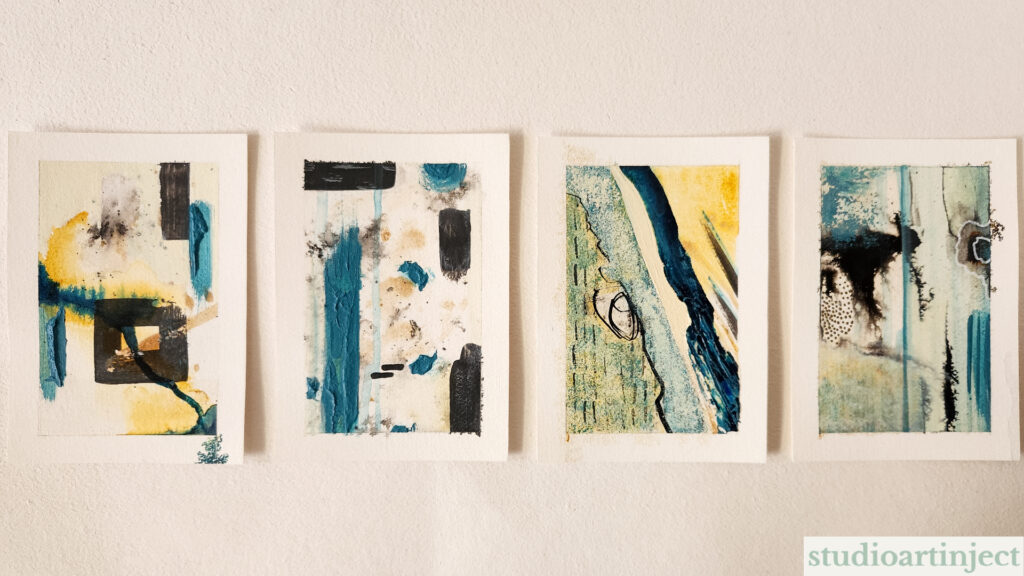For this first month of my 15-day art challenge, I wanted to explore a new medium- acrylics. I coupled that with my desire to get better at my abstract compositions, and the idea to create acrylic abstracts for this month was born.

Using limitations to free your creativity
All the 15-day art challenges that I have planned for the year make use of some sort of limitation to centre me when giving birth to the million ideas that I am constantly conceiving, leaving me paralyzed to even start creating in the first place. Using some manner of limitation in my creative process forces me to pick just one idea and go to town with it, instead of drowning in overwhelm.
The self-imposed limitations are meant to help me and not throttle my creativity, so I do not treat them as a directive set in stone but rather as loose guidelines.

Displaying your art while working on it
Having your work-in-progress artworks take up physical space allows it to take up space in your mind. Passing it by while you’re going about your day, mindlessly staring at it while talking on the phone, co-existing in the same physical space, creates space for the artwork in your thoughts. You are open to and receptive to new ideas that come to you.
This truly creates room for magic! You make a small addition to the piece in small pockets of time you find through the day or channel moments of inspired action.
I found myself randomly mixing up paint to scrape it across a section of the paper in the middle of the day, arbitrarily getting up from my bed at night followed by the inability to sleep to make a random mark of paint here or add a splash of ink there. Throughout this challenge, I found myself indulging in scattered spontaneous acts of creativity, and it made creating joyful and effortless.

Working on multiple pieces of art simultaneously
Every artist’s process is different, but I have noticed that simultaneously creating multiple pieces of art, works for my creative process.
I tend to get attached to the outcome and sometimes overwork a piece of art if that is all I am working on. Working on multiple pieces of art at the same time provides some breathing room and stops me from hyper-focusing on and being overcritical of what I am working on.
I tend not to take myself too seriously when working on multiple artworks at once, and the process of creating is more fun for me. And I quite enjoy how one piece of art informs the other, and how there’s a symphony between them whilst being distinct from one another. It lends itself beautifully to forming a collection.

Creating for the process, not for the finished piece of art
My primary objective with these 15-day art challenges is to:
-Building a routine around creating, creating a huge volume of work, and ultimately being able to trust and rely on my art practice by consistently showing up for it
-Get better at certain elements of art I have an interest in developing and exploring new mediums & techniques
-Tap into the energy of play in my creative practice
-Be intentional about keeping the joy of creating at the centre of everything I do and prioritise my sense of fulfilment in my art practice
And because my reasons for undertaking these 15-day art challenges are first and foremost fostering my creativity and nurturing the artist in me, the focus is on the creative process. And the finished artwork, in the grand scheme of things, is inconsequential. I am not creating with the objective of selling these pieces of art, I may or may not sell some or all of them, but because that is not my main objective in creating all this art, I am detached from the outcome, i.e. the finished piece of art.
It makes the process of creating so much more authentic and therefore joyful. You create fearlessly, you stretch your creative boundaries, and you are not afraid of messing up and being precious about what you’re creating. It facilitates free and honest expression, which inevitably creates art that you and your collectors love!
I’ll leave you with this, people can feel the energy with which something is created, and honest expression leads to deep meaningful connections. I strongly believe that incorporating this into your art-making process is one of the biggest ways in which you create art that strikes a chord with your audience, resonates with your collectors, and ultimately compels them to want to purchase your artwork.